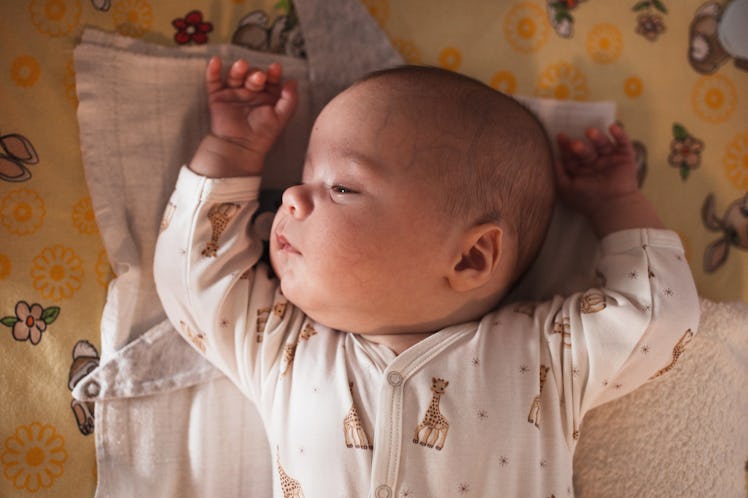Parents Spend Lots Of Mental Energy On SIDS Risks. Should They?
SIDS is a clinical phrase that helps professionals categorize a cause of death in babies. What can a parent do about it? Focus on more pressing things, for starters.

Most parents have anxiously hovered over their baby’s crib to make sure they’re still breathing — and for a good reason. The sudden and unexplained death of a seemingly healthy sleeping baby is a well-documented phenomenon dating back to Biblical times. Today, scientists call it sudden infant death syndrome, or SIDS, and tell us that SIDS risks peak in two to three months of life. There’s not much more they can tell us because SIDS, and SIDS prevention is shrouded in mystery.
“By definition, these deaths are unexpected and parents cannot actually prepare for them ahead of time,” says Andy Bernstein, M.D., a pediatrician at Northwestern University Medical School. So, other than being an existential nightmare, what good is worrying about SIDS to parents? It’s a question with a long, confused history.
Prior to cribs, most infant deaths that we would today label SIDS were attributed to “overlay” or suffocation from sleeping with parents. By the 17th century, co-sleeping in certain regions was a punishable offense. By the late 1800s, concerns peaked to the point where people tried to outlaw co-sleeping. But even back then, the problem remained the same as it is today: Suffocation is a plausible explanation for these tragic deaths, but not always the obvious or only explanation.
Jump ahead to 1971 and you’ll find SIDS was accepted as the only official diagnosis for these types of fatalities but has always been very much a catchall diagnostic term. More recently, in a move that confuses the issue further for parents, the umbrella of SUID, or sudden unexpected infant deaths, is being used to describe all unexpected infant deaths, including preventable causes like accidental suffocation.
In 2017, SUID claimed the lives of 3,600 infants in the U.S., according to the Centers for Disease Control and Prevention. Of these, 1,400 deaths were due to SIDS, about 1,300 deaths were due to other unknown causes, and about 900 deaths were due to accidental suffocation and strangulation in bed.
Although overall deaths related to both SIDS and SUID have gone down over the years, deaths related to suffocation and unknown causes have increased since the late 1990s. This might suggest that doctors are potentially getting better are distinguishing SIDS deaths from suffocation deaths, which is challenging because a partially blocked airway in an infant is hard to rule out. It might also mean that parents are not managing the right risks like practicing safe sleep habits to prevent suffocation because they are busy obsessing over SIDS.
A growing body of research indicates that factors ranging from birth weight to brain abnormalities to respiratory infections could play a crucial role in SIDS. Other theories have surfaced over the years as to a cause, such as being circumcised after being born prematurely in the winter, but have yet to be legitimized. But the reality is, researchers just don’t know. SIDS continues to be primarily a medical term of exclusion meant to clinically categorize a cause of death, not a term for parents to bandy about.
A better obsession for moms and dads is over creating a safe sleeping environment. This means setting up a bare crib with a flat sheet and nothing else. Then making sure babies are put to sleep on their backs.
Beyond that, the best thing parents can do is take care of themselves mentally, and a big part of that early on may have to do with shifting their attention towards suffocation risks and safe sleep habits and away from SIDS. Leave the medical jargon to the professionals and worry about parenting, because that’s hard enough as it is.
“Although there are many illnesses that parents cannot control, they are luckily extremely rare,” Bernstein says. “Parents should take great comfort if they are providing their infant with a safe sleeping environment.” They can leave it at that.
This article was originally published on